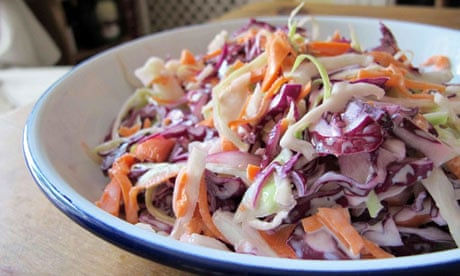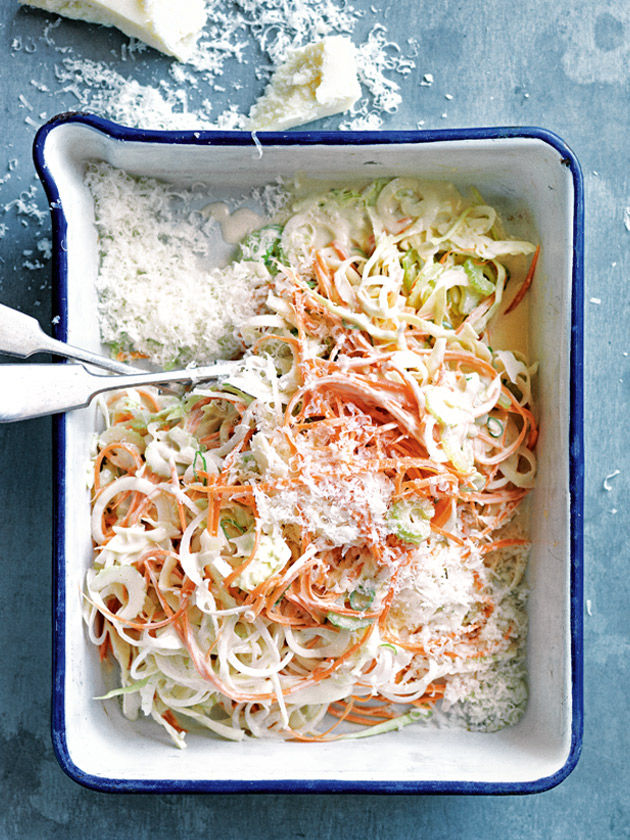Coleslaw
- rosemarydearman1
- Feb 1, 2020
- 4 min read
"If it doesn't have cabbage in it then it's not coleslaw: it's a salad." Felicity Cloak

I don't think I have ever made coleslaw or eaten much of it either. Maybe the only coleslaw I have eaten was not very good - sweet and gloopy. That's how I think of it anyway. But here I am considering making some for tomorrow's lunch.
It's another one of those 'classic' dishes that, even back then, had countless variations - and today - well the variations are endless, with perhaps the most common one being an 'Asian slaw' using Asian green vegetables and an Asian kind of dressing. But I have decided to go back to the roots of it all as it were. And where better to begin on that journey than with Felicity Cloake, whose recipe I am going to use.
So what are the origins? Well the general opinion seems to be that it is Dutch who call it 'koolsla' which means cabbage salad according to Wikipedia. The Dutch took it to America and the Americans exported it to the world. Bert Greene, an American, has a slightly different history for it.
"Germans called cabbage 'kohl'. Early Britons dubbed it 'cole'. Long before some Francophile English dandy translated 'caboche' to 'cabbage', Saxons had persuaded Angles that there was pleasure in partaking of the chewy noggin raw; hence 'cole slaw'. Which actually means 'cabbage sliced.' Bert Greene
I do remember learning, in one of those two television series from long ago on the history of the English language, that the original English language was very closely related to the language of Friesland - which is in the Netherlands. So Dutch. Even today you can see the similarity of the two languages if you look at Dutch. Modern English, though has a lot more Latin and French influence.
Whilst reading Felicity Cloake's article and checking out a whole range of recipes I realise that the main bones of contention seem to be whether to use mayonnaise or vinaigrette (or mayonnaise like things) as the dressing and whether to add onions to the mix of cabbage and carrot. If you are talking 'classic' the one constant seems to be cabbage and carrot. And I have to say that in spite of Felicity Cloake leaning away from onions the majority of the 'classic' versions seem to include it. That said, in the end she compromises and puts in spring onions. So I will too.
As to the dressing - well early versions could not have had a mayonnaise dressing because mayonnaise was not invented until the mid eighteenth century. Prior to that it would have been a variation on vinaigrette with, I think, a preference for cider and malt vinegars over wine ones. I even saw one version that mentioned melted butter in the mix. Instead of the oil I think. I, like Felicity Cloake, and many others though, am going for mayonnaise. In America there are buttermilk, sour cream and other creamy dressings too.
Why am I considering coleslaw at all? Well we are having cold meats, including some silverside and ham, but more importantly I have some red and green cabbage in the fridge which I really should use. Cabbage keeps for a long time, so I'm sure it will be OK.
"I often make a quick coleslaw from things that have outstayed their welcome in the salad tray, tossed with vinaigrette" Felicity Cloake
Yes vinaigrette is quicker but mayonnaise doesn't take much longer, and, moreover can be made in advance - like this afternoon. But I won't be going fancy with the basic ingredients.

If you want to go fancy you can do no worse than look at Donna Hay who has 27 versions of coleslaw. (Taste has over 300!) The one shown here is her 'classic' version and it is, indeed, simple and mostly classic although she adds celery to the mix and she is an onion adherent too. But then she sprinkles Parmesan over the whole lot. Not very authentic at all and it brings in a whole different cuisine. I hasten to say that it might be a wonderful addition - like most celebrity chefs she can't resist adding that little different twist. But then again, that's what makes them special isn't it? And it does look beautiful doesn't it? She uses a mustardy mayonnaise for the dressing by the way with a bit of sweet and sour from malt vinegar and sugar.
Here are two of her fancier slaws - an almost logical variation which features green peppercorns and apple - it still looks like a slaw, and an out-there version of pineapple, apple and zucchini. It does include some cabbage, which I guess is how she justifies calling it a slaw but it doesn't even have that shredded look.
But then if 'slaw' means salad or sliced, why not have whatever you want in it? The recipe makers out there mostly adhere to the sliced/shredded definition I think. But if you add 'cole' to your title then it really, really has to have cabbage.
I don't think I'll make a lot of it though because I'm not convinced my family will go for it. But then again, they may surprise me.
















Comments